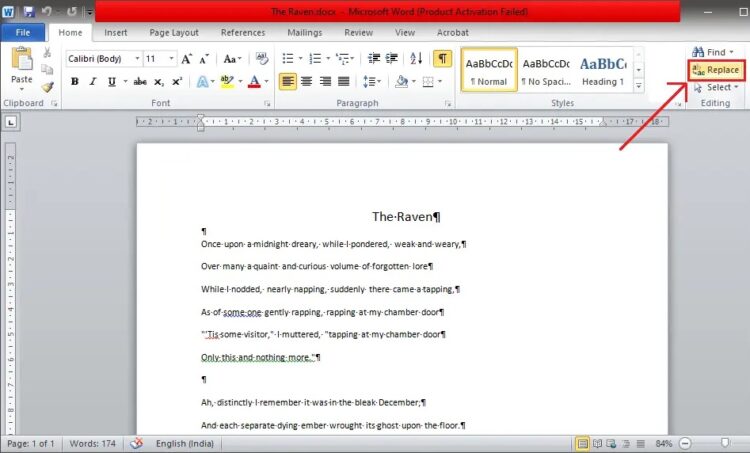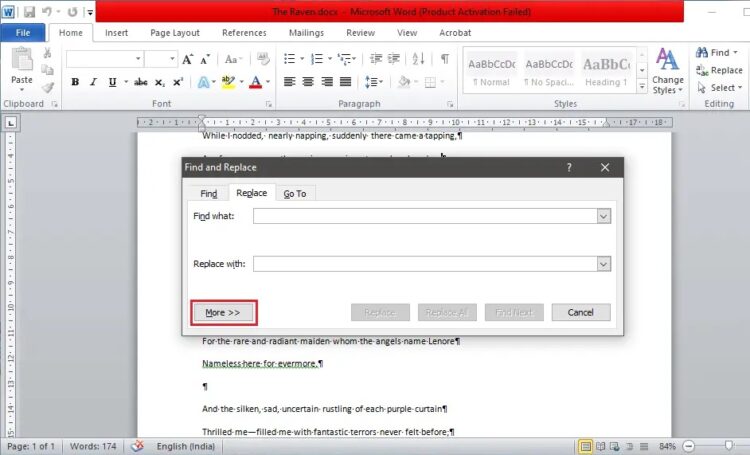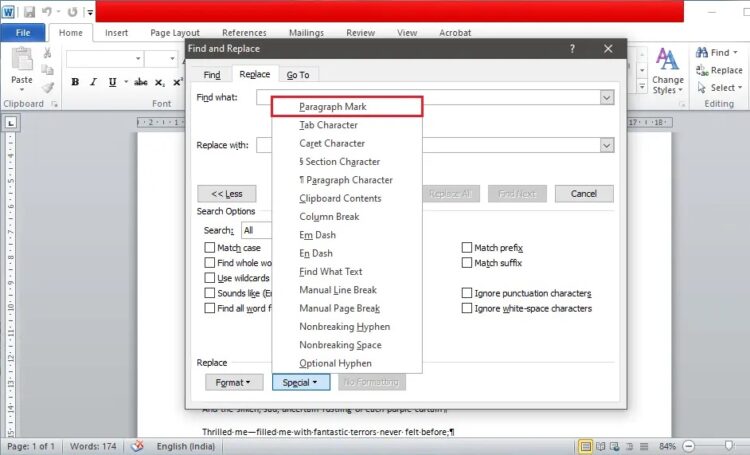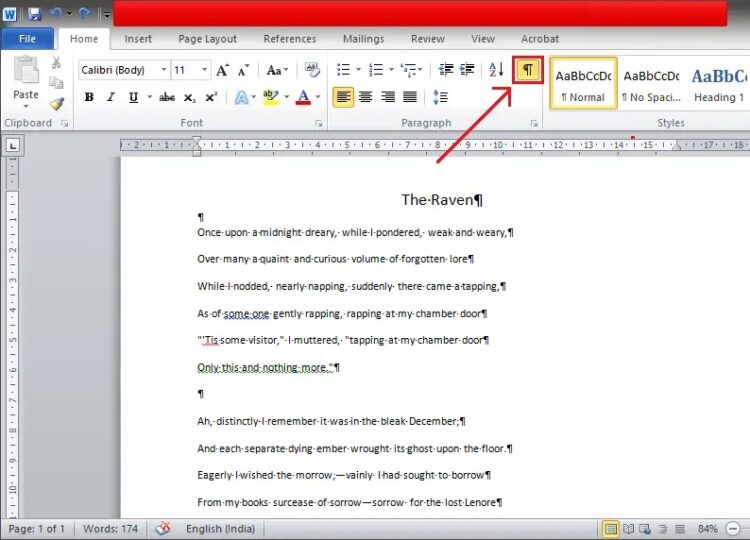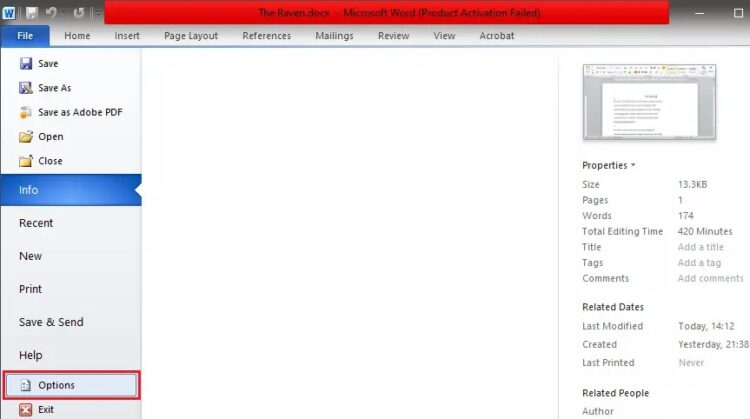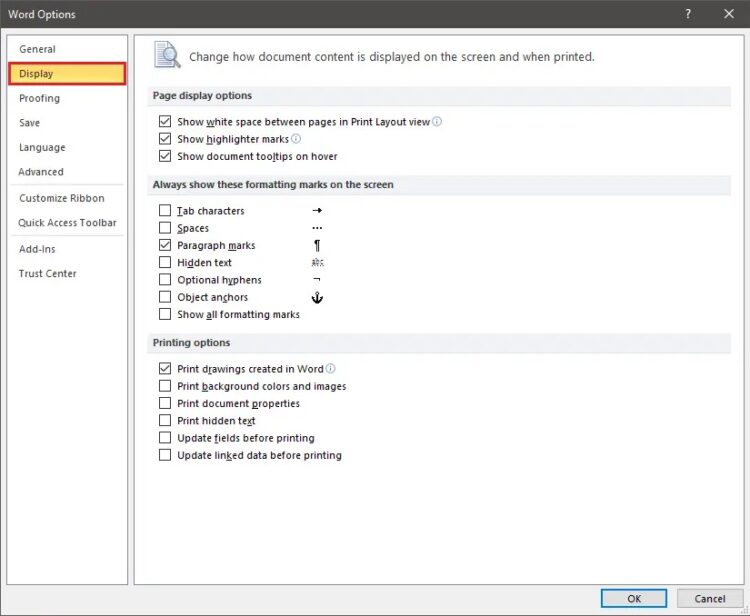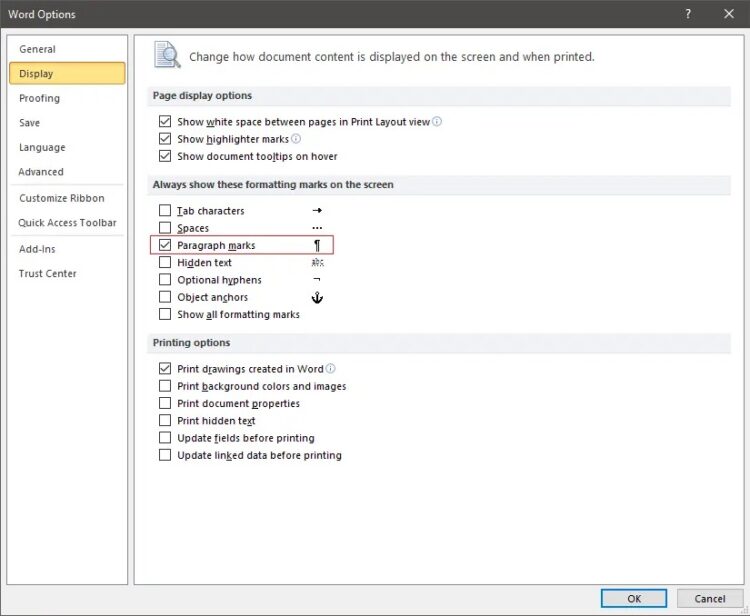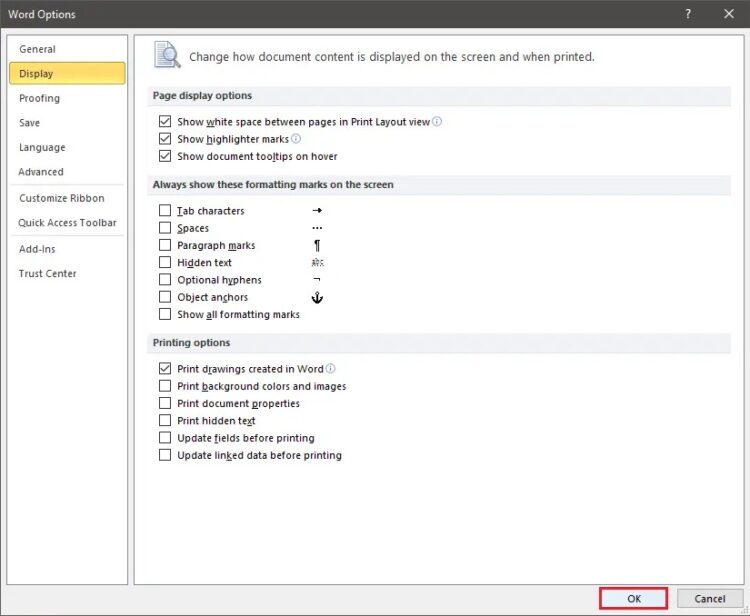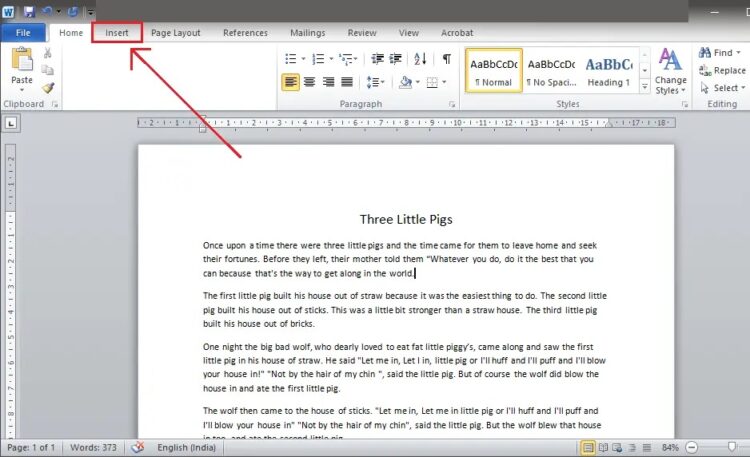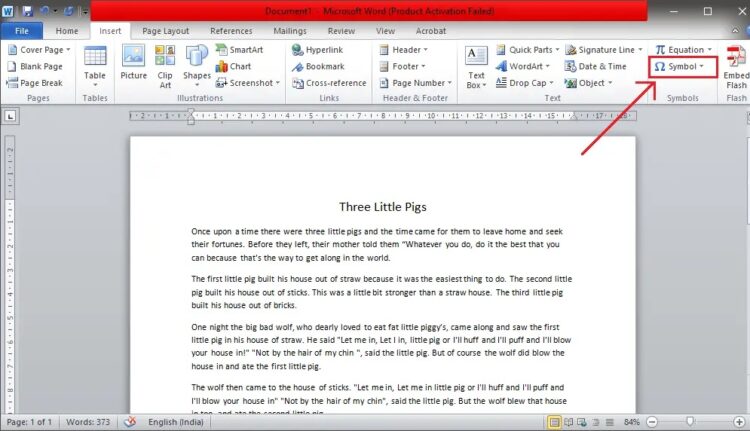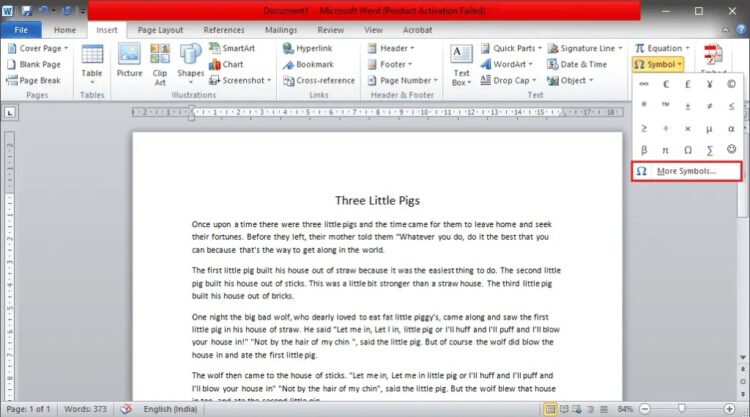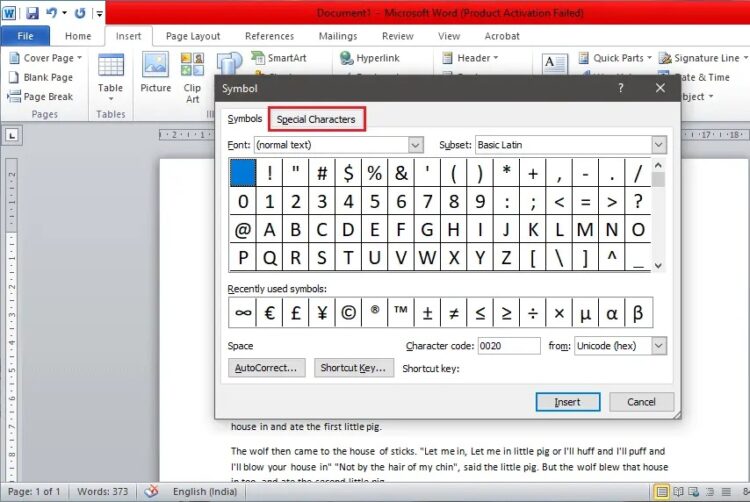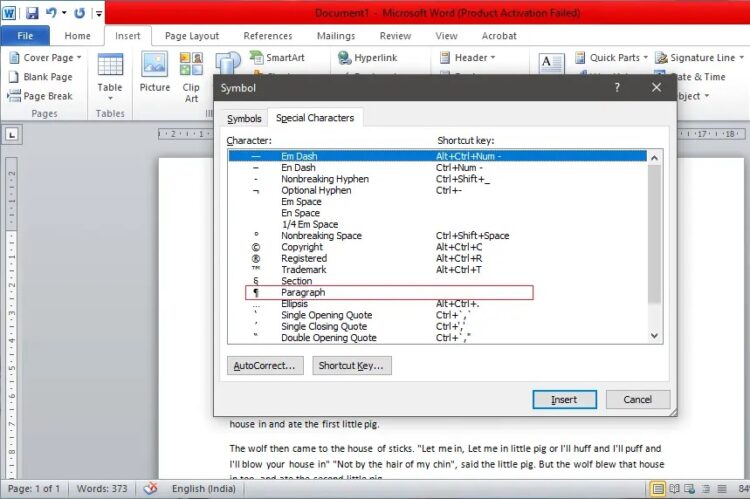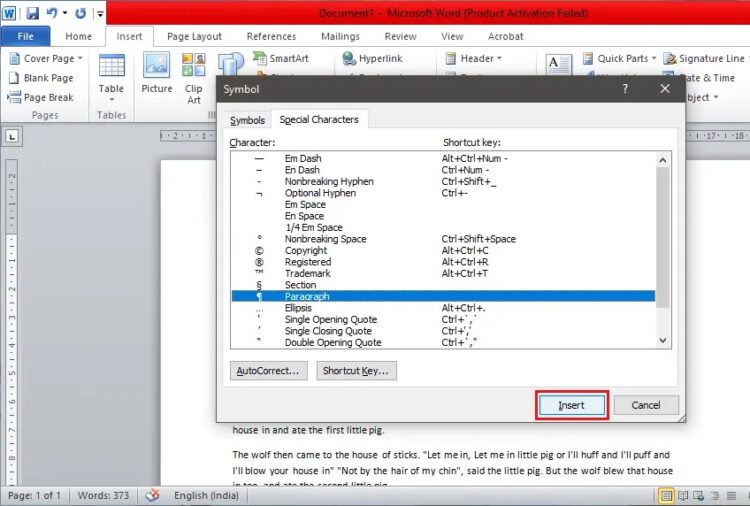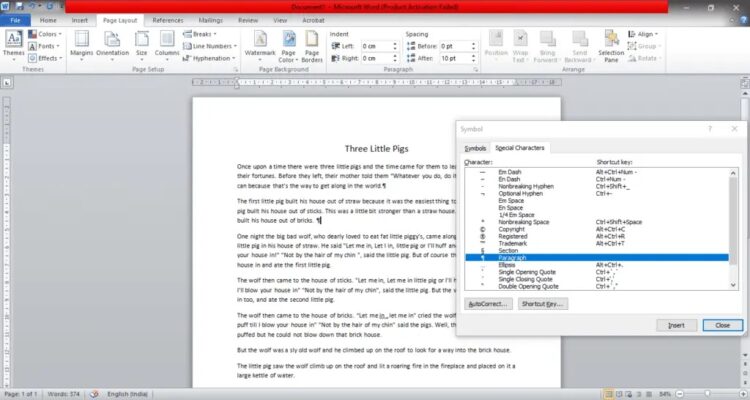In this guide, you will learn different easy ways to Remove Paragraph Symbol (¶).
Do you have a bunch of fancy-looking inverted ‘P’s in your Word document that you’re not sure what to do with? If you want to learn how to get rid of them, you’ve come to the right place. A Pilcrow (¶) is an inverted P sign that indicates a new paragraph or section of text. The paragraph mark, Alinea, the blind P, and the paragraph sign are all other names.
Pilcrow is a non-printing character or formatting marker, hidden and rarely visible in Word or printed documents. In the simplest terms, the number of paragraph marks in a text equals the number of times you pressed the enter key while typing.
To the average reader, these symbols may appear tacky, making the paper appear more complicated. This tool may appear archaic in today’s tech-driven minimalistic world, but it is your best friend when you need to check if there is a paragraph on an empty page or run through a large number of paragraphs at once. Likewise, the sign is helpful when you need to fix a document with sloppy or incorrect formatting.
A good technique for proofreading a document is to read it without the nonprinting characters first, focusing solely on the text. Then, reread it while these characters are visible to catch any formatting errors.
Table of Contents
How to Remove Paragraph Symbols in Word
Method 1: Find and replace the Paragraph Marks
Method 2: Hide using the Paragraph Symbol button in the Toolbar
Method 3: Remove Paragraph Symbol using Word Options
How to add the Pilecrow only in specific places?
Final Words
How to Remove Paragraph Symbols in Word
It’s easy to get rid of these pesky Pilcrows. Remove Paragraph Symbol (¶) can be accomplished in three simple steps, each of which is described in detail below. The methods vary from identifying and replacing individual Pilcrows to pressing a single button and deleting them all at once.
Each method has pros and cons; consider them and decide which is best for you based on your needs and desires. So, let’s see how to remove ¶ in Word using the methods listed below:
Method 1: Find and replace the Paragraph Marks
This procedure involves locating all paragraph marks and replacing them with blank spaces, thereby removing them. This method is applicable when you only want to Remove Paragraph Symbol (¶) from a specific section of text rather than the entire Word document.
1. To begin, select the text from which you want the paragraph symbol removed (or, by default, it will be removed from the whole document). Then, select the ‘Replace’ option from the ‘Editing’ group under the ‘Home’ tab. It is also possible to use the ‘Ctrl + H’ keys.
2. When the ‘Find and Replace’ dialogue box appears, place your cursor in the ‘Find what’ box. Then, in the lower-left corner, select ‘More>>.’
3. Now, choose ‘Special.’ This displays a list of special characters used in a document.
4. From the drop-down menu, select ‘Paragraph Mark.’
5. The letter ‘^p’ will appear in the ‘Find what’ box after selecting it.
(There is no need to repeat the process if ‘^p’ appears in the ‘Replace with’ section by mistake. Instead, copy and paste it into the box labeled “Find what).”
6. Check that the box next to ‘Replace with’ is empty. Then, click the’ Replace All’ button to replace the symbol in the specified text or the entire document.
If you want to remove specific paragraph marks, click the ‘Replace’ button one at a time.
After making your changes, you can close the dialogue box and continue editing the rest of your document.
Method 2: Hide using the Paragraph Symbol button in the Toolbar
The Pilcrow icon controls the majority of the formatting symbols in MS Word. Paragraph marks, section breaks, optional hyphens, buried text, and other formatting elements are examples.
It is the simplest method for getting rid of these pesky Pilcrows.
1. First, go to the ‘Home’ tab and look for the ‘¶‘ icon. It will be in the ‘Paragraph’ section.
2. When you click the button, all of the previously visible paragraph marks, as well as the rest of the formatting markers, will be hidden.
3. You can also enable or disable this feature by pressing the shortcut key ‘Ctrl + Shift + 8′.
This method is simple and straightforward, but it is not limited to paragraph marks; keep in mind that once disabled, all formatting markers will vanish.
Here are a few examples:
Line breaks: These are represented by a right-angled arrow pointing to the left (↲), which is inserted when you press the ‘Shift + Enter’ key.
Tabbed Characters: These are special characters added to a document with an Arrow (→).
Spaces: A minuscule dot (.) represents any space between two words.
Hidden Text: MS Word has a feature that allows you to hide or suppress text in the display or while printing. All secret text will be displayed with a dotted line beneath it in this area.
Optional hyphens: The (¬) symbol indicates where a word should be divided at the end of a line. These are not printed unless a word truly breaks at the end. If/when they occur, they are displayed as standard hyphens.
Object Anchors: This indicates which paragraph on the page is linked to a floating object. A tiny anchor symbol (⚓) represents it.
Page Breaks: These appear after breaking the page with ‘Ctrl + Enter.’
Method 3: Remove Paragraph Symbol using Word Options
Word Options can help you view and update settings. In addition, it enables users to personalize their interface, customize it based on their preferences, and change the MS Word startup settings.
These are advanced methods for controlling and customizing editing tasks, printing settings, document presentation, and other tasks. This strategy is useful when you don’t need paragraph makers but still want to see the rest of the formatting tools.
(For example, you might not need to see the paragraph markings, but you might need to see the buried text.)
1. Click the ‘File’ button in the upper-left corner.
2. Locate and select ‘Options’ from the menu that appears.
3. A new window titled ‘Word Options’ will appear on your screen. On the left side of the Word Options box, look for the ‘Display’ setting.
4. Uncheck the box next to ‘Paragraph markings’ in Display. This option can be found in the section titled ‘Always show these formatting markings on the screen.’
5. After unchecking the box, click the ‘OK’ button at the bottom of the window to save the changes. You will now be returned to your document, with the paragraph markings hidden but the rest of the text remaining unchanged.
How to add the Pilecrow only in specific places?
You may need to use paragraph markers or the ‘Pilecrow’ symbol in a few places while leaving the rest of the content alone. It will not display your document’s formatting or any additional formatting markers. Keep in mind that a symbol is being added; imagine inserting a simple exclamation mark or question mark into a text. It does not affect the word count, but it raises the character count.
ALSO SEE:
Printer Not Activated Error -30
The method for adding these identifiers is straightforward, as described below:
1. First, position your cursor where you want the paragraph mark symbol to appear and select the ‘Insert’ tab from the menu bar.
2. On the right, you’ll see the option ‘Symbol.’ Click the arrow next to it to open a drop-down menu.
3. From the drop-down box, select ‘More Symbols…’.
4. A dialogue box titled ‘Symbol’ will now appear on the screen. Click the ‘Special Character’ tab, which is next to the ‘Symbols’ tab.
5. Scroll down the list until you find the Pilecrow symbol or ‘¶‘ next to ‘Paragraph,’ and then click on it.
6. After you’ve highlighted the selection, click the ‘Insert’ button at the bottom.
When you press the Insert button once, the pilcrow sign moves to the location of the pointer. To insert paragraph markers at various points throughout the manuscript, keep moving the pointer and pressing ‘Insert’ simultaneously.
A quick tip: When Word is in full-screen mode, you can move and resize the Symbol dialogue box (by dragging on the window’s corners/borders) so that the document appears in the background.
You can now move the cursor with your mouse quickly and efficiently to place the symbol in various locations.
Alternatively, after inserting one paragraph marker, close the pop-up box and copy and paste the Pilcrow symbol from one location to another. Ctrl + C and Ctrl + V are the shortcut keys for copying and pasting, respectively.
Final Words
I hope you found the following instructions helpful and successfully removed the Paragraph Symbol (¶) in Microsoft Word. If you have any additional questions about this guide, please post them in the comments section.


